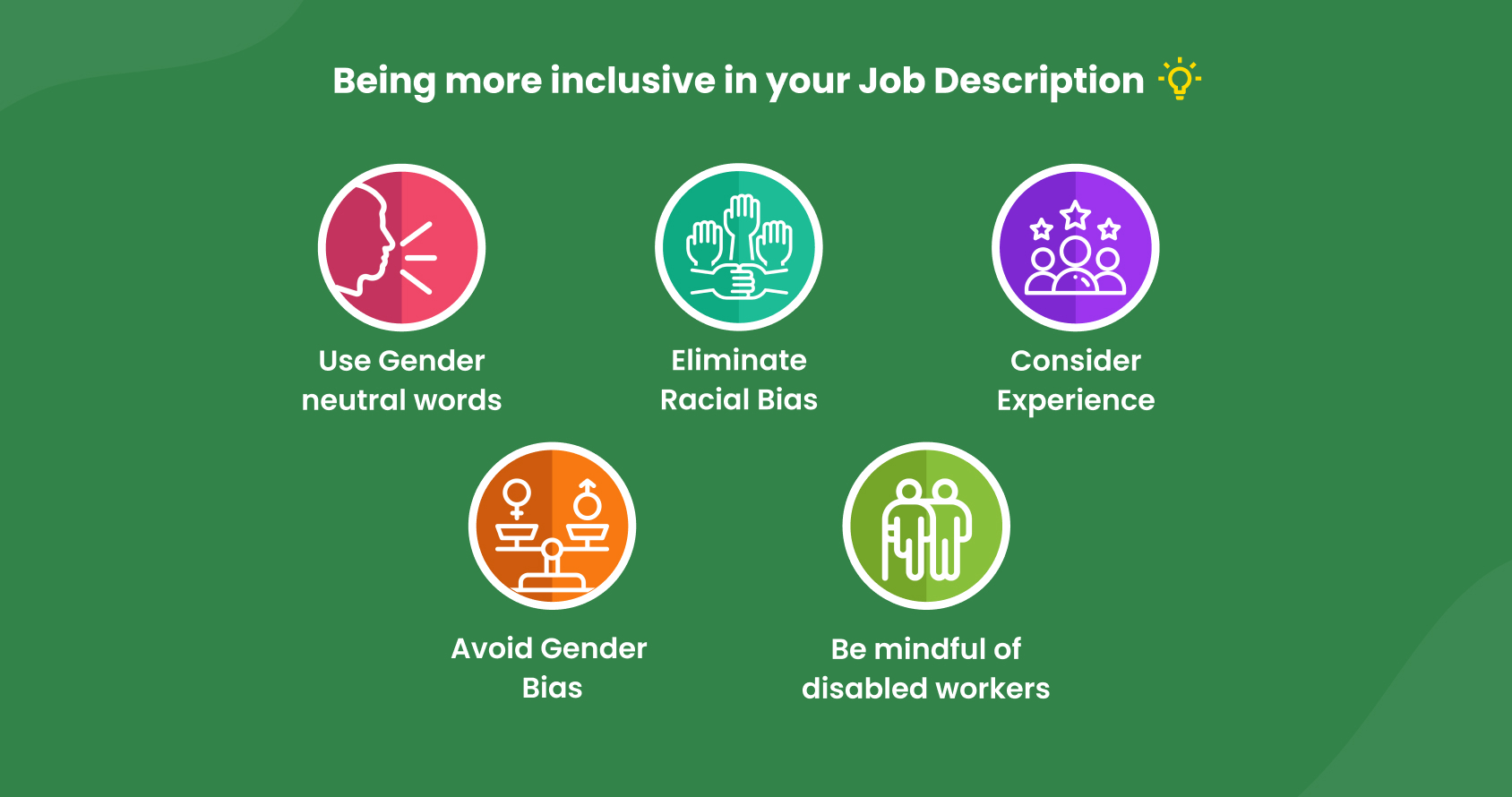What is a job description? A job description is the company’s first impression of your potential hire. It includes all the essential details regarding a specific job like title, location, summary, duties, responsibilities, reasonable to have skills, salary range, to whom the candidate should be reporting, etc.
Creating a job description helps employers zero down on the desired qualifications and work experience needed for hiring candidates. It also helps candidates understand what a company is looking for when they interview.
How to write a job description
A job description should include the Job title, duties, skills required, qualifications, work experience, salary, and job location.
Job title
The title should be informative enough to convey the job description, meaning quite succinctly. It should also be specific to the nature of work while avoiding company jargon to avoid confusion (For Example, Assistant Research Manager is much more precise than Assistant Manager or Grade 5 Manager).
Job overview
This section, which comes right after the Job Title, provides brief details about the position and the organization. It gives candidates an overall summary of what to expect from the job profile, work environment, job location, and suitability for prospective job seekers.
Responsibilities and duties
The Responsibilities and Duties section gives you a consolidated list of the tasks you will handle as an employee. It also tells you about the importance of each of these tasks. It provides an idea about the general nature of the employee’s work in this position.
Qualifications and experience
Every job description must specify the educational qualifications, work experience, technical skills, soft skills, and certifications required for the role. It is an excellent way to filter candidates. But recruiters should also be careful about not making the selection criteria too stringent, or else it may dissuade applicants.
How to create more inclusive job descriptions

An inclusive description helps the candidates picture themselves in a particular role. Sometimes candidates end up not applying for the positions they would have been a good fit for, as they find it difficult to identify with the description of a particular role.
Writing an inclusive description for a job will make working in a specific organization more relatable, but it will also give you more candidates to choose from. Here are a couple of ways in which one can create a more inclusive description :
- Avoid using gendered terms that discourage any particular gender from applying.
- Instead of listing all the requirements, only include the ‘must-haves.’
- Consider mentioning a salary range.
- Avoid corporate buzzwords and try sticking to plain text.
- Use more inclusive language
A sample template for job description
Below is a sample template for your reference:
Job Title:
State the Formal Designation
Reports To:
The [job title] will report to [state the designation of reporting manager].
Job Location:
State the city/town/village that the new joiner will be reporting to.
Job Overview:
Provide a summary of three-four-sentences describing the role. State the appraisal and promotion criteria and also mention how the part fits into the organization structure.
Responsibilities and Duties:
List the essential tasks within this job in decreasing order of importance.
Qualifications and Skills:
List the educational background, certifications, work experience, technical and soft skills, and personal characteristics that you are looking for.
Difference between Job specification and job description
There are essential distinctions between Job Description and Job Specification. We will enlist these differences below:
- A description includes a job title and summary, duties and responsibilities, etc., whereas a job specification includes qualifications, candidate experience, skills, and emotional aptitude required for the job.
- A description for a job evaluates the importance of the tasks within the role, while a job specification looks at the capabilities required for the position.
- A job description helps management to measure performance and training needs. A job specification helps prospective job seekers understand their eligibility for this role.
- A description for a particular job helps the company decide on the suitability of employees for particular roles. A job specification helps them decide on things like promotions and increments.
How an ATS can help craft compelling job descriptions
A description is the first thing a potential applicant meets about an opening at your company, and it can make or break your recruitment efforts.
With an ATS, your job descriptions will always be on point. No more worrying about putting in the extra time to make sure everything is as relevant and appealing as it can be.
PyjamaHR is an ATS that helps you save on time and money by streamlining your hiring process—by writing better job descriptions, which ultimately increases the talent pool of quality candidates that you can fish from.
Frequently asked questions (FAQ)
A job description is a practical, plain-language tool that explains the tasks, duties, functions, and responsibilities. It details who performs a specific type of work, how that work is to be completed, and the frequency and the purpose of the job related to the organization’s mission and goals.
Job descriptions can help identify particular skills or abilities necessary for a position or the environmental pressures that apply to the position. A good job description tells the applicant what the position may involve or require.
A job description usually lists the job title, location, job summary, working environment, duties to be performed on the job, etc. A job specification lists out the qualifications, experience, training, skills, emotional attributes, and mental capabilities of an individual to perform the job.


